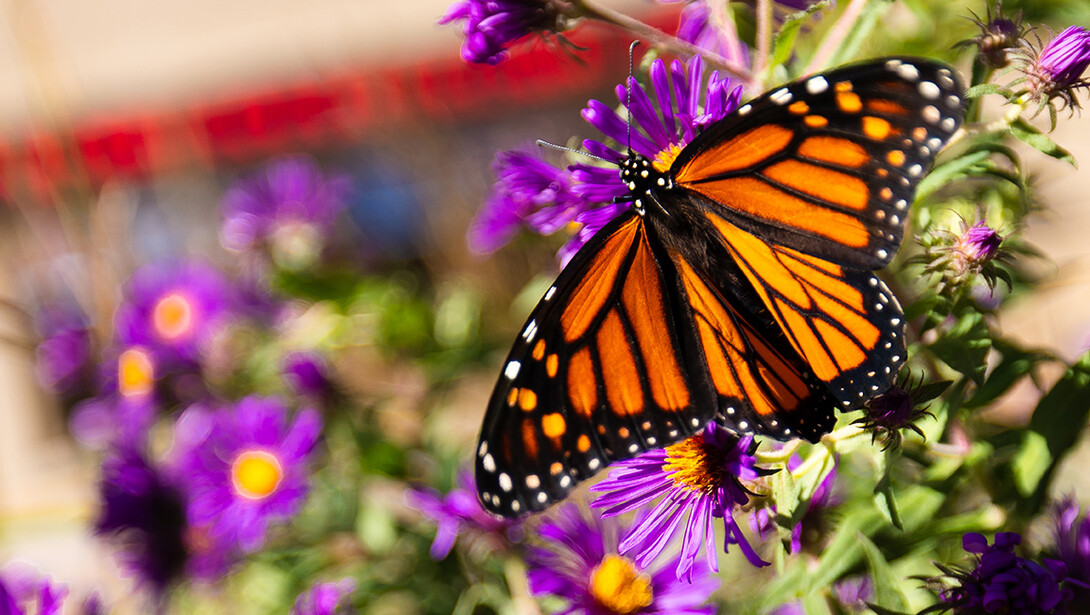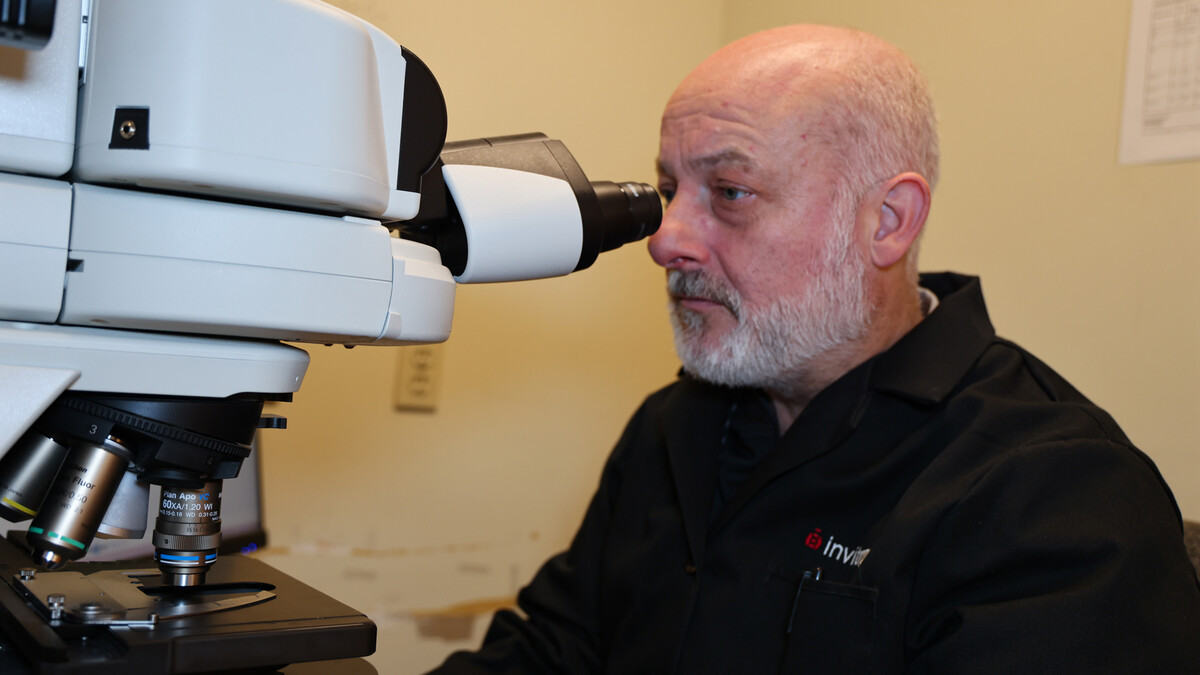
Enjoying a stroll across campus this fall likely includes the happy sighting of a monarch butterfly — or dozens of them.
The iconic orange and black pollinators are making their annual trip to overwintering sites in Mexico, stopping to recharge and feed in Nebraska. The sightings might suggest a possible surge in monarch populations.
This is by design, said Jody Green, urban entomologist and extension educator in the Douglas-Sarpy County Extension Office. Through the Nebraska Pollinator Habitat Certification program, Nebraska Extension helps educate individuals, businesses and other entities on how to make their green spaces friendlier to pollinators like the migrating monarch, and encourages the planting of milkweed, a superfood for the butterflies.
“This really helps with the monarchs because not only do we encourage milkweed as a host plant for the caterpillars, but the nectar from the blooms late into the fall really helps this ‘super generation’ for that long trip to Mexico,” Green said. “We had the most applicants and members join this year. It’s exciting to have others on the bandwagon who want to attract and conserve pollinators.”
Currently, there are 299 certified pollinator habitats in the state, with 67 of those in Lancaster County, including the Backyard Farmer Garden. There is at least one certified habitat in 31 Nebraska counties. The extension pollinator certification program is one of several across Nebraska working to boost pollinator habitats, as populations — including the monarch — are on decline. The U.S. Fish and Wildlife Service is currently advocating to have the monarch butterfly classified as threatened under the Endangered Species Act.
Green said it has been a group effort, with many organizations to promote, support and align the quest to help pollinators. She also suggested that those who want to get involved can check Monarch Watch for a list of ways to help.
"It really is a long list of people that do their part to educate," Green said. “I'm proud of the push to grow milkweed and support the monarch butterflies."

It may take a while before population numbers come back up, but it seems the efforts are making a difference.
“We just need to remember that these monarchs need to get down to Mexico and overwinter,” Green said. “Populations are measured in the area (hectares) as they roost over the winter in Mexico, so we really can’t compare apples to apples until next year as to quantifying the migrating monarch population.”
Seeing the fruits of the many efforts is encouraging, though.
“I would guess anyone who planted fall blooming plants and who are observing are thrilled at seeing the butterflies feeding and roosting,” she said. “It's a good time to be a monarch because they're getting a lot of love.”
Nebraska Extension also maintains information about pollinator plants online, broken down by season.







